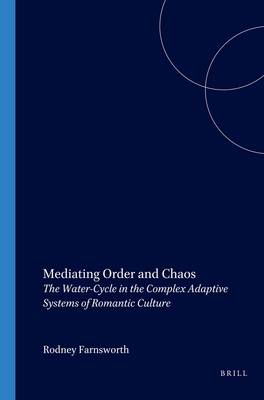
- Afhalen na 1 uur in een winkel met voorraad
- Gratis thuislevering in België vanaf € 30
- Ruim aanbod met 7 miljoen producten
- Afhalen na 1 uur in een winkel met voorraad
- Gratis thuislevering in België vanaf € 30
- Ruim aanbod met 7 miljoen producten
Zoeken
Mediating Order and Chaos
The Water-Cycle in the Complex Adaptive Systems of Romantic Culture
Rodney Farnsworth
€ 169,45
+ 169 punten
Omschrijving
This literature-centered study offers an interdisciplinary approach to Romantic culture. If is pioneering in that it employs the complexity method of anthropology. Recent literary studies employ the complexity/chaos theory adapted from the natural sciences; however, here is presented for the first time a complexity method taken from the social/human sciences. This complexity method is useful in mediating not only contradictions within Romanticism, but the chaos of contemporary theories concerning it. One of the intensifying literary debates is that between the so-called "Greens" and "Reds," naturalists and humanists.
Mediating Order and Chaos not only traces the split between nature and man to Romantic Culture but finds there, too, a Spinozian vision of man and nature in unity - thereby denying any naturalist/humanist split. This volume is of interest for those who wish to see essays in the holistic approach to culture. Centering on hydraulics, hydrology, and meteorology, this study examines literature, painting, music, economics, and the rhetoric of science, philosophy, and politics, it therewith demonstrates how the water cycle was transformed into a cosmic metaphor that mediated, in the form of several complex adaptive systems, between the chaos of too much change and that of not enough.
Mediating Order and Chaos not only traces the split between nature and man to Romantic Culture but finds there, too, a Spinozian vision of man and nature in unity - thereby denying any naturalist/humanist split. This volume is of interest for those who wish to see essays in the holistic approach to culture. Centering on hydraulics, hydrology, and meteorology, this study examines literature, painting, music, economics, and the rhetoric of science, philosophy, and politics, it therewith demonstrates how the water cycle was transformed into a cosmic metaphor that mediated, in the form of several complex adaptive systems, between the chaos of too much change and that of not enough.
Specificaties
Betrokkenen
- Auteur(s):
- Uitgeverij:
Inhoud
- Aantal bladzijden:
- 356
- Taal:
- Engels
- Reeks:
- Reeksnummer:
- nr. 56
Eigenschappen
- Productcode (EAN):
- 9789042014275
- Verschijningsdatum:
- 1/01/2001
- Uitvoering:
- Paperback
- Formaat:
- Trade paperback (VS)
- Afmetingen:
- 170 mm x 240 mm
- Gewicht:
- 761 g

Alleen bij Standaard Boekhandel
+ 169 punten op je klantenkaart van Standaard Boekhandel
Beoordelingen
We publiceren alleen reviews die voldoen aan de voorwaarden voor reviews. Bekijk onze voorwaarden voor reviews.











